
Fox Island Pest Control's Seasonal Newsletter
Vol:1 Issue:2 - Spring, 2025
In This Issue:
Past Quarter Local Service Report
Current Seasonal Pest & Service Strategy
Entomology Focus: Tapinoma sessile (Odorous House Ant)
8 Most Dangerous Insects In Washington
FIPC Feature Service – Rodent Contraception Control

Past Quarter Local Service Report
Welcome to Fox Island Pest Control’s Spring issues of “Currents” for 2025!
My goal is to provide added value to your ongoing preventative service by keeping you up-to-date with current pest issues in our local community along with our pest prevention strategies for the upcoming season. In addition, ‘Currents’ will provide you with entomological level information on the pests that affect our community and share with you some of the innovative eco-friendly practices and protocols Fox Island Pest Control has, and continues to develop, to keep you pest free while protecting your family and honoring our commitment to wildlife and the environment.
For our new clients who onboarded this past quarter, a special “Thank You” and welcome to the Fox Island Pest Control family! I am so grateful for the trust you have placed in our local family business and I look forward to keeping your homes and businesses pest free.
Rats, rats and more rats, oh, and did I mention ants?!!
As Fall gave way to Winter, and like clockwork, rat activity was the main driver of our community pest control efforts this past season. Increases in rodent populations due to another mild Winter equated to more sightings and new client calls, especially on Fox Island and the more rural areas of Gig Harbor. Fortunately for our quarterly clients, we saw minimal activity as I am visually inspecting (and repairing as needed) common access points, such as compromised crawlspace vent screens, during my preventative quarterly visits! In addition, many clients have been practicing good Integrated (Rodent) Pest Management skills by clearing natural harborage areas from their property which makes a huge impact.
As we moved into early March, I also began getting early season ant calls and as the month progressed so did the ant activity! In every situation the culprit was Tapinoma sessile or the Odorous House Ant. In this issue of ‘Currents’, Ive chosen this ant species as the Entomology Focus and I hope to share some interesting facts about this, the most common ant in our community.
On the Integrated Pest Management efforts of Fox Island Pest Control, I will share an exciting update on Fox Island Pest Control’s new rodent contraception program. Read more about this service in the FIPC Feature Service article in this edition of ‘Currents’.
And finally, I would like to thank everyone who gave business referrals and who wrote such wonderful Google reviews this last quarter! Referring and sharing your experience with potential clients in the local community has made such a positive impact on our local family business and I cannot thank you enough! If you have not left a review and would like to, you can do so below:
John R. Smith,
Owner & Master Technician
Current Seasonal Pests & Service Strategy
Last Winter's pre-emergent service strategy pays off!
This past Winter I made a few predictions; due to last years mild Winter, rodent activity would be heavy this Winter and the likelihood of another mild Winter would foster in early and heavy ant activity. Because of this, I increased inspections for rodent activity and I also applied pre-emergent ant barriers to all of our quarterly preventative service client’s homes.
With that, I am please to say we had zero ant service calls and only a three minor rodent issues, with two being mice intrusions into garages and one roof rate issue in a un-securable tile roof. Proof that Integrated Pest Management preventative measures without the use of rodenticides or poison bait stations works!
As we move into Spring, I will continue stepped up rodent activity inspections along with keeping those foundation ant barriers fortified as well as applying pre-emergent spider and wasp control applications.
Clients who have had previous issues with ants, pay particular attention around your kitchen, baths and other areas that have access to water, such as pet water bowels or potted plants and notify me immediately if you see a single ant!
Be sure to log into your client portal to see your next service date and look for your service email reminder a few days before our visit. If you have specific concerns, please reach out so these can be addressed. If you were a “one-time” customer and would like to begin a quarterly preventative service, you can request service HERE.
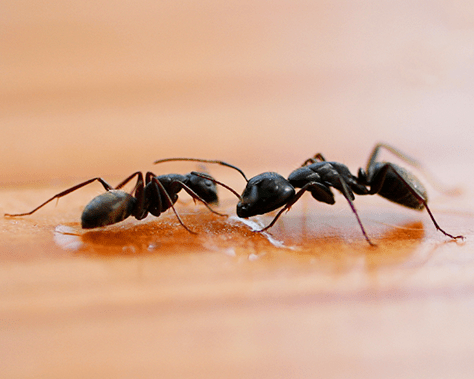
Entomology Focus: Tapinoma sessile (Odorous House Ant)
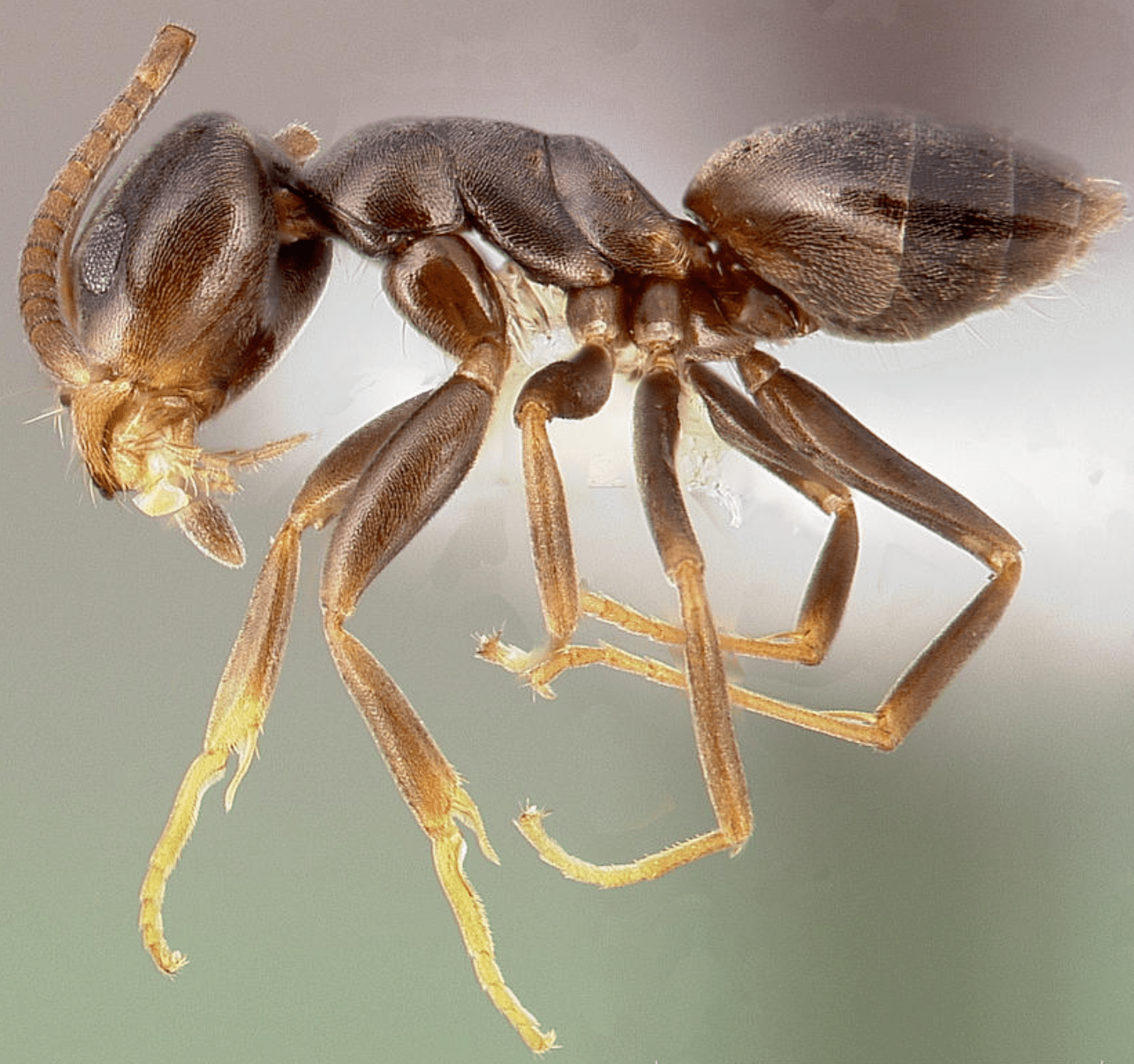
What is a Odorous House Ant?
The odorous house ant gets its name from the strong, rotten coconut-like smell it gives off when crushed. These tiny brown ants range in size from one-sixteenth of an inch to one-eighth of an inch long.
How can you prevent an infestation?
Pests such as odorous ants are attracted to moisture. To prevent odorous house ants, eliminate standing water. Keep tree branches and other plants cut back from the house. Sometimes odorous ants use these branches to get into the home. Make sure that there are no cracks or little openings around the bottom of the foundation. Ensure firewood and building materials are not stored next to the home because odorous house ants like to build nests in stacks of wood.
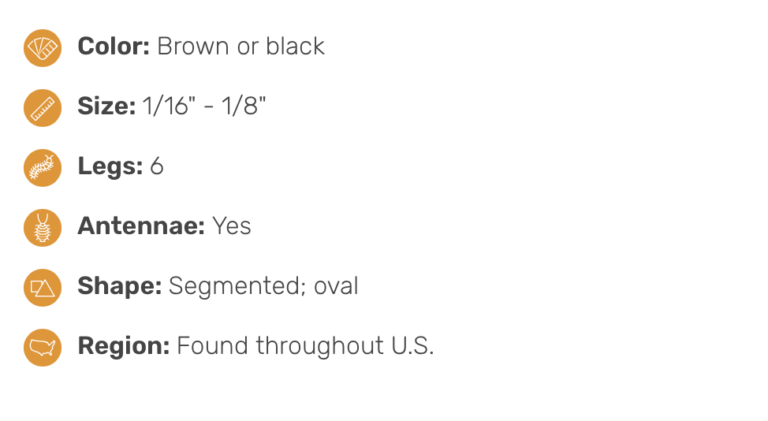
Habitats of Odorous House Ants
Pests such as odorous ants are attracted to moisture. To prevent odorous house ants, eliminate standing water. Keep tree branches and other plants cut back from the house. Sometimes odorous ants use these branches to get into the home. Make sure that there are no cracks or little openings around the bottom of the foundation. Ensure firewood and building materials are not stored next to the home because odorous house ants like to build nests in stacks of wood.
What Are The Risks Associated From Odorous House Ants?
Odorous house ants do not pose a public health risk, but they can contaminate food and should be avoided. If you do notice odorous ants in your property, contact Fox Island Pest Control immediately and avoid the use of repellant based pesticides. These products often times do more harm that good and many times actually increase an indoor ant population. Although most repellant pesticides contain effective “on-contact” control, many times when these products are used close to the indoor ant nest, the queen will often feel threatened by the product’s introduction. In response she will not only move the nest buy many times produce several new queens that create additional sub colonies, progressively making the ant infections worse.
8 Most Dangerous Insects In Washington
by Anne Cagle (Reprint, Nature Dec 16, 2024)
The definition of an insect is an animal in the classification insecta having a well-defined head, thorax, and abdomen. They have three pairs of legs and may have wings spiders and other arachnids (class arachnida) aren’t insects because they don’t fit the physical profile and are in their own biological classification. Given the definition, Washington state doesn’t have many dangerous insects. However, some species pose risks to humans, and some humans are more prone to health problems if and when they come into contact with a dangerous insect.
Regarding yellowjackets, wasps, and hornets: While these creatures have different names, they are all part of the vespidae family. Fun fact: The world is home to about 100,000 types of wasps, but Washington state has only a few. The state varieties of the vespidae family include yellowjackets, paper wasps, mud daubers, and bald-faced hornets. A non-native variant called the northern giant hornet has been found in this area, as well
Common Aerial Yellowjacket (Dolichovespula Arenaria)
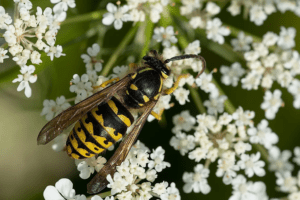
Yellow jackets are the most common wasp found in Washington State. These animals are about one half of an inch long with abdominal black and yellow stripes. They build round paper aerial hideaways in trees, on the ground. The common aerial varieties are aggressive wasps and spit venom to alert their fellow jackets to intruders. These creatures defending their territory can cause serious allergic reactions to their stings.
Bald-Faced Hornets (Dolichovespula Maculata)
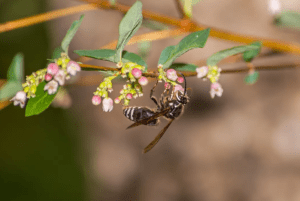
Bald-faced hornets are not true hornets but are still in the wasp family. Their coloring is black and white. These hornets are usually not aggressive but will defend their territory if provoked. The bald-faced hornet sting is very painful. They have smooth stingers, allowing them to sting repeatedly with venom that can cause life-threatening allergic reactions.
Northern Giant Hornet: ‘Murder Hornets’ (Vespa Mandarinia)
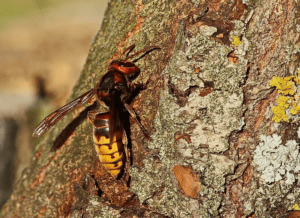
Northern giant hornets were called Asian giant hornets, but scientists changed the name to avoid using language that may appear to be discriminatory. The northern giant hornet is the largest in the world, typically about 1.75 inches. This hornet is not native to Washington, but northern hornet sightings have been reported in the state, although not for a few years now. The hornets are very aggressive and will flock to sting multiple times. They inject a larger amount of venom than other wasps, leading to severe reactions. People should not approach these hornets. They should report sightings to Washington’s Department of Agriculture.
UPDATE: As of December 19, 2024, Washington State’s Department of Agriculture has declared the Northern Giant Hornet eradicated from the State.
Honeybees And Bumblebees (Family: Apidae)
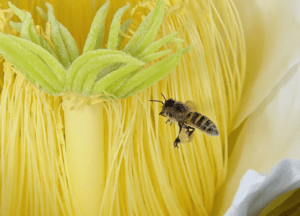
Bumblebees and honeybees are vital to agriculture, the human food supply making all life possible. Some species in Washington state are the endangered western bumblebee (bombus occidentalis) and the dainty fairy bee (perdita). They are not aggressive creatures, preferring to float among their flowers to keep the world healthy and green. However, like any creature bothered in its home, bumblebees and honeybees will attack to defend their territory. This defense poses a risk to people with allergies
Mosquitoes (Family: Culicidae)

Mosquitoes, those buzzing and annoying creatures that plague summer picnics, are of various species. One species is the western treehole mosquito (Aedes sierrensis). While this animal is unlikely to cause West Nile virus, it can cause heartworm disease in dogs. Two mosquito species that can cause West Nile virus are Culex tarsalis and Culex pipiens. Their enemies are dragonflies, which kill mosquito larvae. Fun fact: In some cultures, including China, dragonflies aren considered sacred; some people think it’s bad luck to kill one.
Blister Beetles (Family: Meloidae)
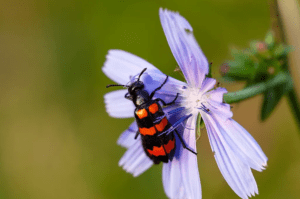
Blister beetles do exactly as their name suggests. These elongated beetles release a chemical called cantharidin when crushed. Contact with the chemical can cause skin blistering and irritation. Like any wild animal, leave these creatures peacefully to themselves. The largest group of blister beetles, called epicauta, includes many species that are dangerous to horses. Eating just a few of these beetles in alfalfa hay can be deadly. A common practice called hay conditioning, where machines crush the stalks to help them dry faster, can also crush beetles. This releases cantharidin into the hay.
Assassin Bugs (Genus: Pselliopus)
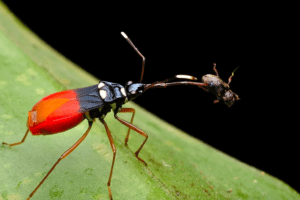
Assassin bugs are useful in keeping pests like leafhoppers, beetles, and caterpillars in check, these bugs pose risks to humans. The bite from their needle-like beak may be painful and cause allergic reactions. They may transmit the deadly Chagas disease from the parasite trypanosoma cruzi. Assassin Bugs are known as “kissing bugs” because their preferred bite area is the mouth. Assassin bugs are 0.5 inches to 2 inches long and may be brown, red, yellow, black, or multicolored. When they catch other insects with their sticky or spiny front legs, they use their mouth to poke the insect and suck out its insides.
Carpenter Ants (Genus: Camponotus)
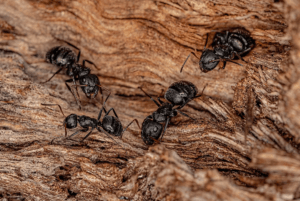
Carpenter ants do not pose a direct threat to human life. Instead, they cause damage to buildings. Carpenter ants eat through wood, creating big holes, intricate tunnels, and colony routes throughout buildings. The creation of these holes, tunnels, and routes can weaken a building’s framework and make structures unsafe. Carpenter ant bites are not as toxic as many other dangerous Washington state insects. Part of this has to do with their mouth structure. Their bites are painful because carpenter ants can also spray formic acid onto their victims when they bite. Washing off the bite area gets rid of the formic acid.
Conclusion
When encountering dangerous insects, remember these are not “bad” animals, but organisms merely defending themselves or their territories. Whether the encounter is with a blister beetle disturbed from its haven, a mosquito rising from a lake, or a delicate bee ambling in the breeze, these small entities are part of Washington state’s environment and nature. Remember, too, that these meetings can cause life-threatening emergencies for some people, requiring immediate medical attention. Learning to live safely with the eight most dangerous insects in Washington is important for everyone — residents and visitors alike. So get out and enjoy the great outdoors.

FIPC Feature Service - Rat Contraception & Fertility Control
Fox Island Pest Control has now become the first and only local pest control service provider (and one of only a few in the State of Washington) to offer rat contraception and fertility control in our local community.Rat birth control is the safest, most eco-friendly and humane rodent population control program available utilizing the innovative rodent fertility control products from SenseTech, the leader in fertility control solutions for managing animal pest populations. This safe, non-toxic and highly effective rat birth control targets rodent populations at the source, reducing infestations humanely. ContraPest, and it's sister product Evolve, limits reproduction, making it an ethical and sustainable choice for long-term rodent management.
To learn more about Fox Island Pest Control’s rat contraception & fertility control, click HERE

To inquire about this, or any of Fox Island Pest Control’s services, request a quote or free inspection and assessment click HERE.
